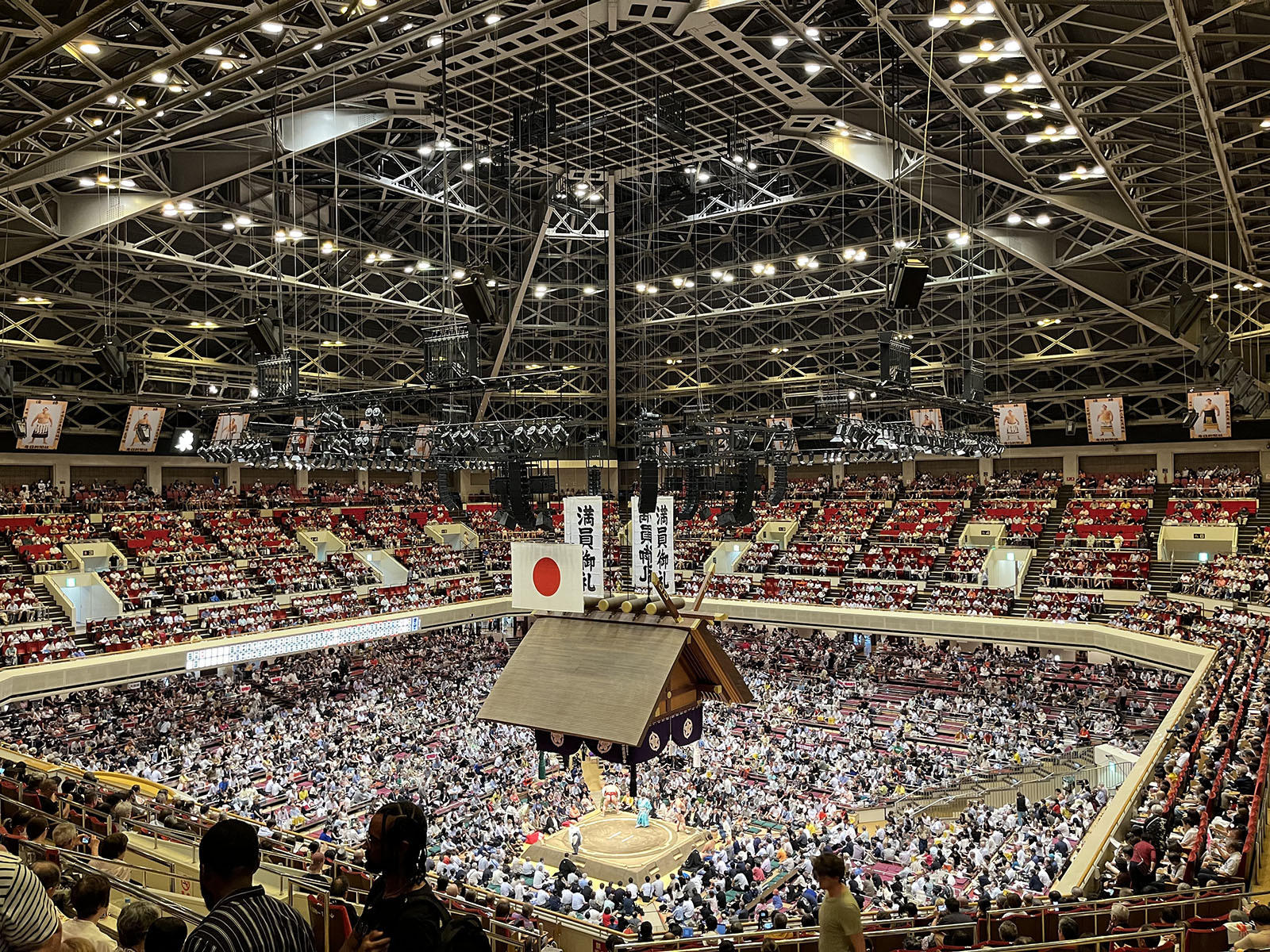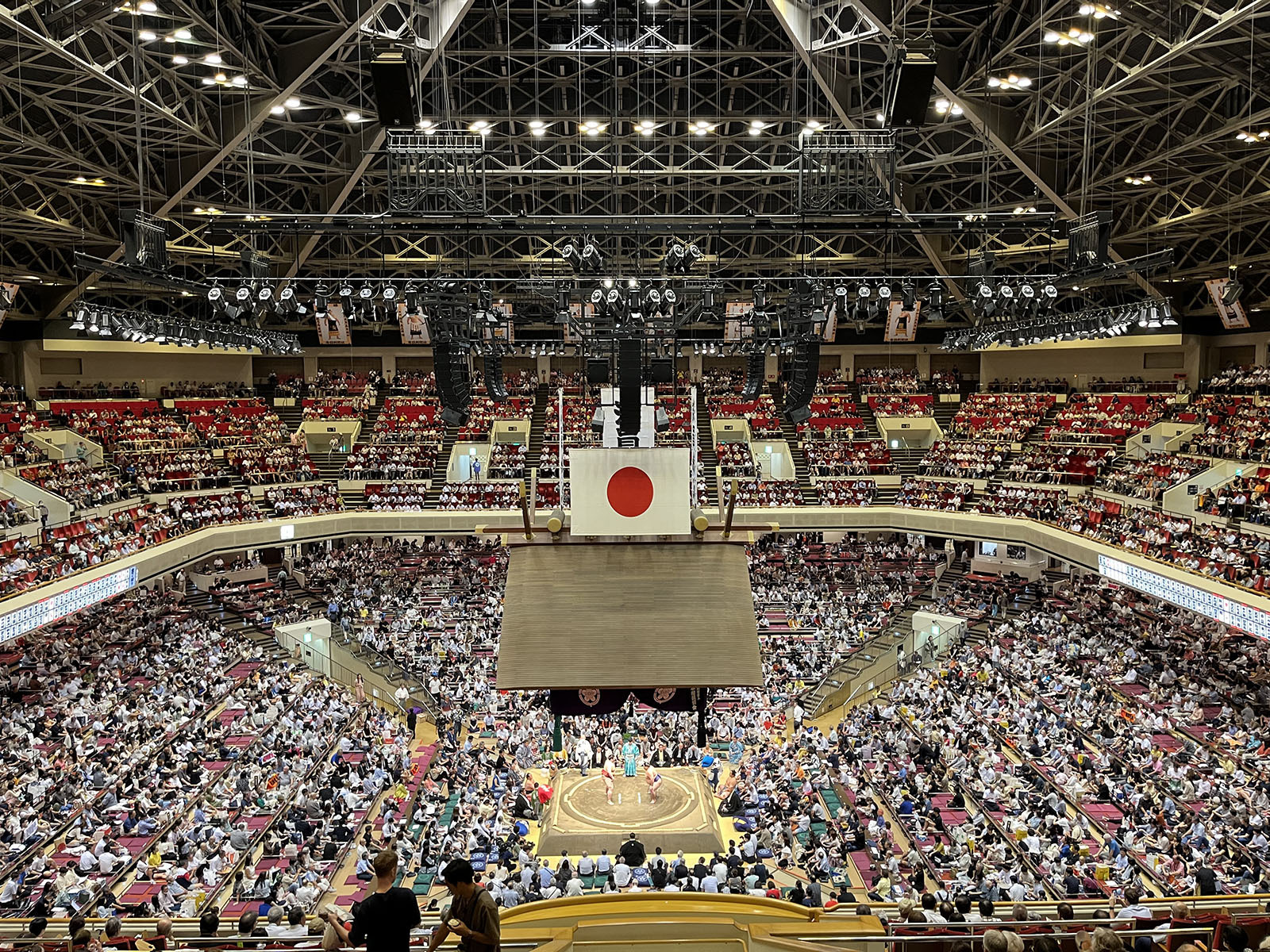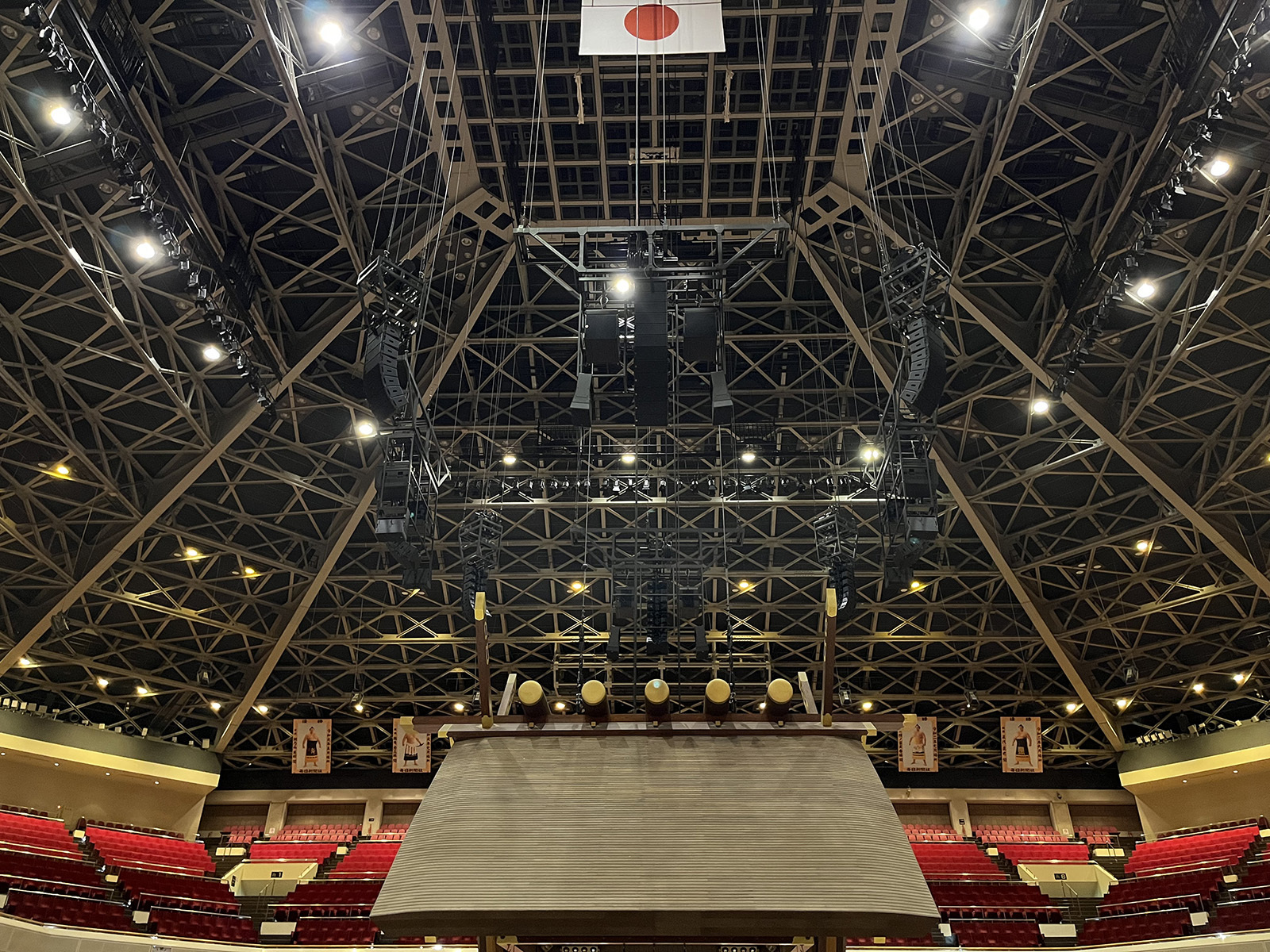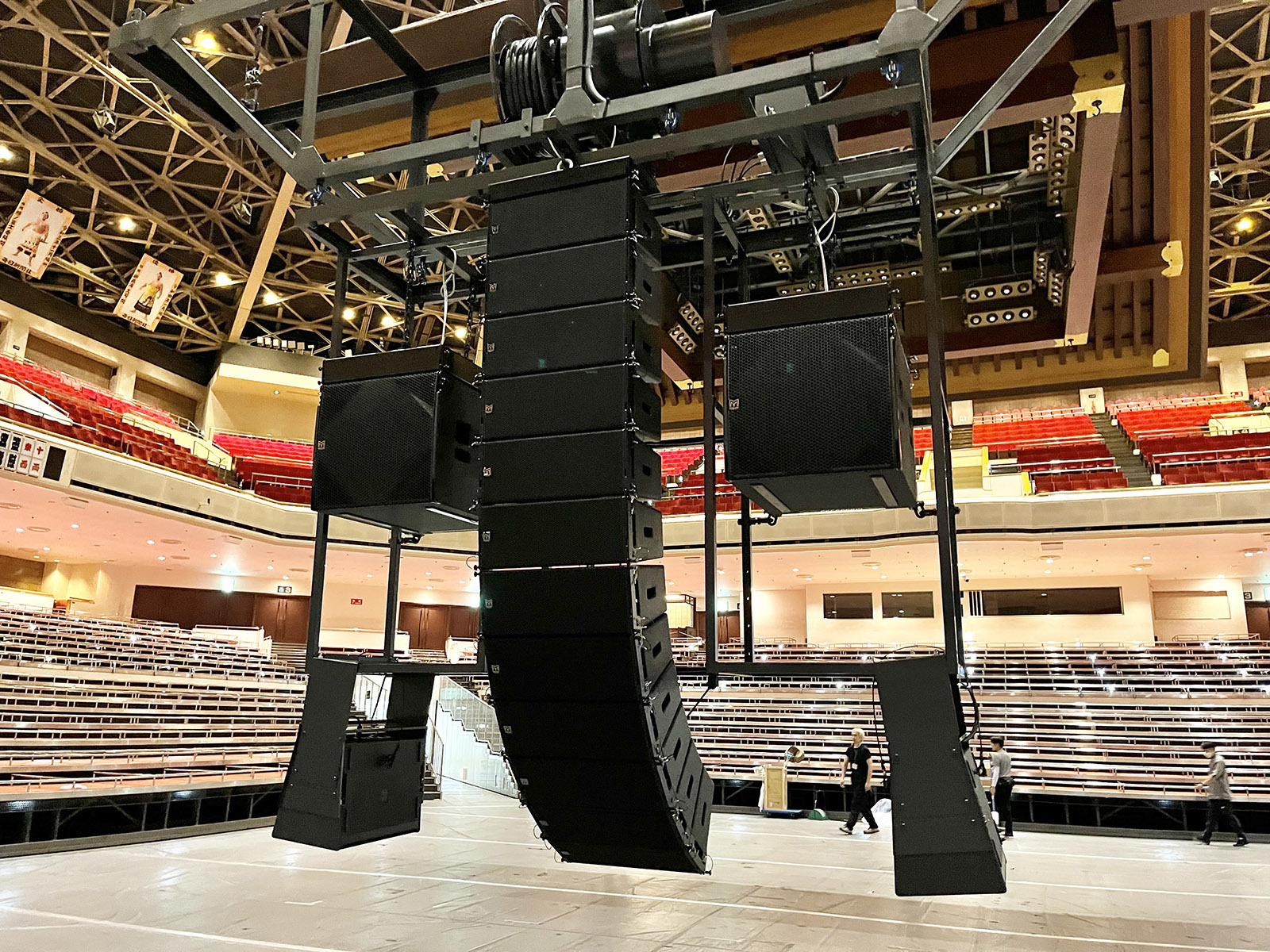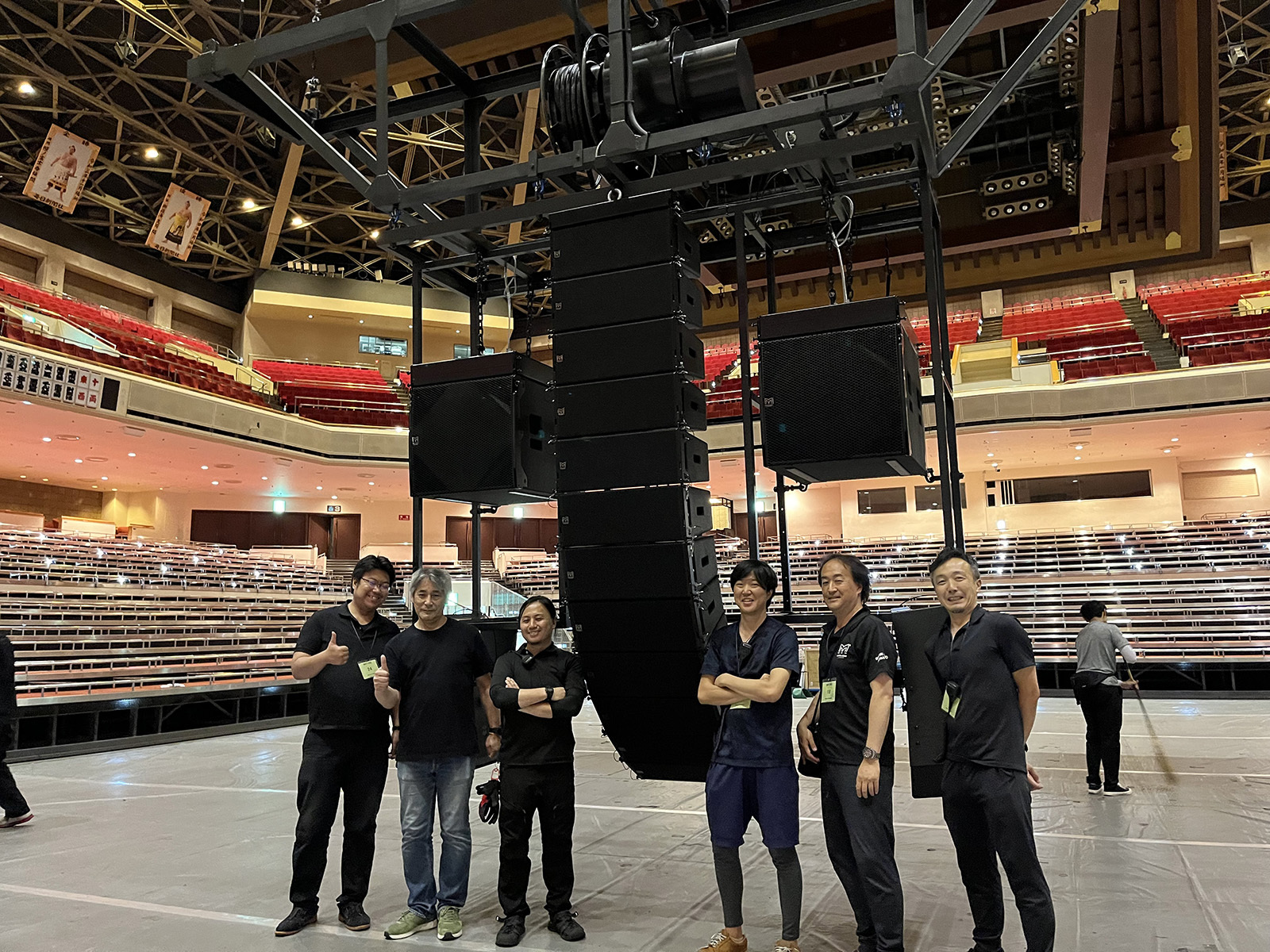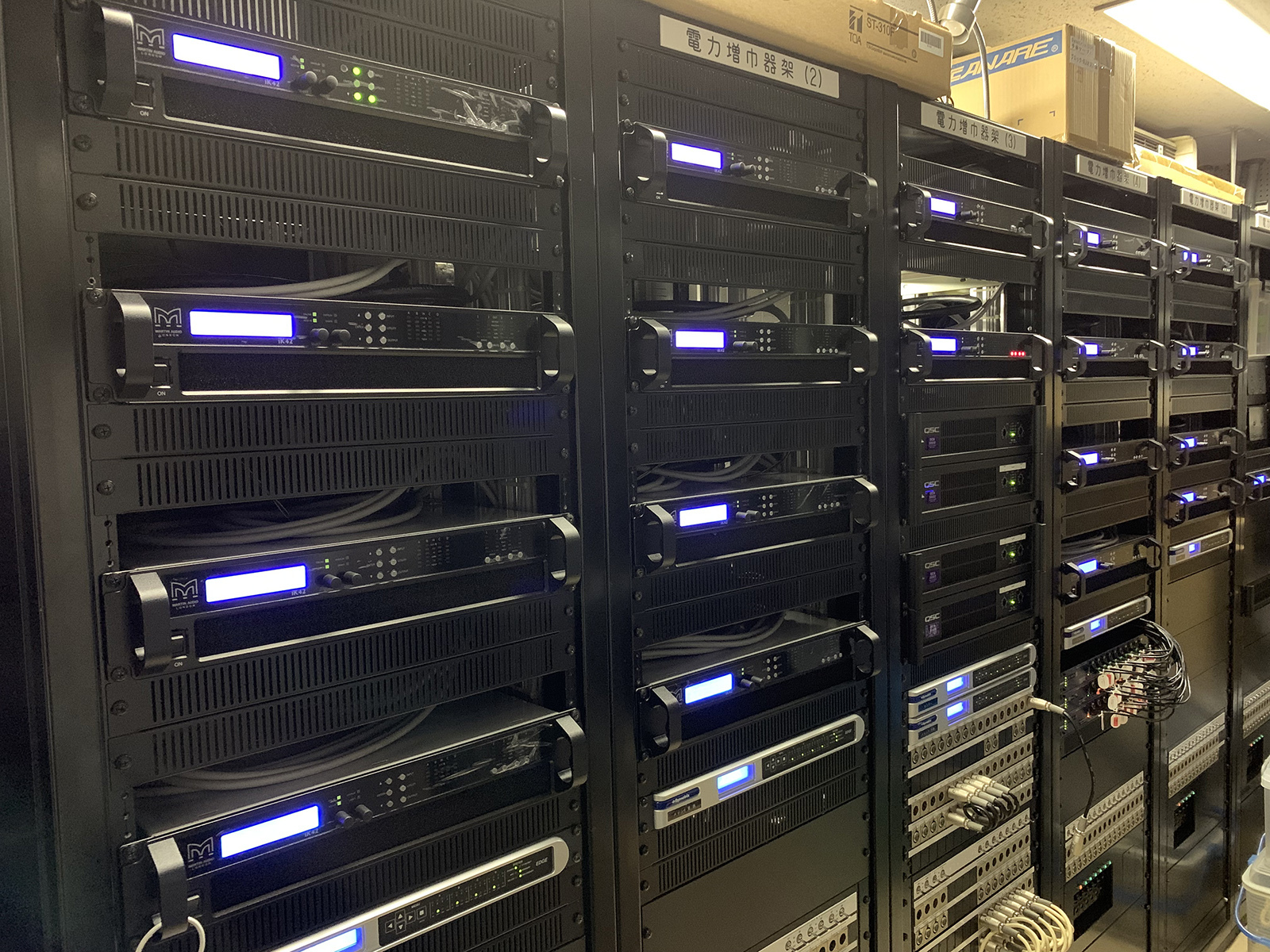FAMOUS TOKYO SUMO HALL UPGRADES WITH SCALABLE MARTIN AUDIO WPS PA
Ryogoku Kokugikan, also known as Ryogoku Sumo Hall or Kokugikan Arena, is the only building dedicated to Sumo, Japan’s national sport, and has been home to many historic initiatives.
The origins of Sumo began some 2000 years ago but in its modern form it only took hold around 300 years ago. Once established in Japan, it passed down from generation to generation.
Such is its iconic status, there is no-one in Japan who has not heard of the Tokyo-based Ryogoku Kokugikan. Sumo wrestlers practice here daily, dreaming of winning the Gift Cup, and since Sumo is Japan’s national sport, His Majesty The Emperor sometimes comes to watch, and has seats reserved for him.
But Ryogoku Kokugikan also hosts various other events during periods when sumo is not being held, including wrestling, concerts and corporate events.
Sumio Akashio, sound engineer at the Ryogoku Kokugikan, said the arena therefore required a PA that could reproduce, intelligibly, everything from quiet to loud sound reproduction for wrestling in the ring. It also needed to be heard right up to the last row of seats on the second level balcony. “In such a way we can create a realistic atmosphere and overcome all the challenges.”
In planning the system upgrade Takahisa Ota from Audiobrains conducted a simulation, using Martin Audio’s proprietary DISPLAY 3 modelling software, and found that the manufacturer’s WPS line array, in the correct configuration, would be best suited to accommodate the various events hosted in Kokugikan—in terms of size, weight, clarity, and SPL. In addition to WPS they added an SXCF118 cardioid subwoofer to provide the deep bass that had been requested. Some 80 WPS cabinets and eight SXCF118 subs were deployed in total.
Martin Audio’s TORUS also features in the shape of eight T1215 (four pairs per side) for nearfill. By being directed downwards they are able to deliver sound without reflections to the VIP areas, where it had previously been difficult to achieve clarity due to the influence of the roof, suspended above the ring. No other satellite speakers are now required, and each pair can be used to control the SPL within its specific area as required.
Takahisa Ota, who carried out the installation, made the necessary system adjustments to ensure coverage, consistency and control throughout the stadium. “In the vertical pattern I managed to maintain clarity at the rear while at the same time suppressing any reflections.”
